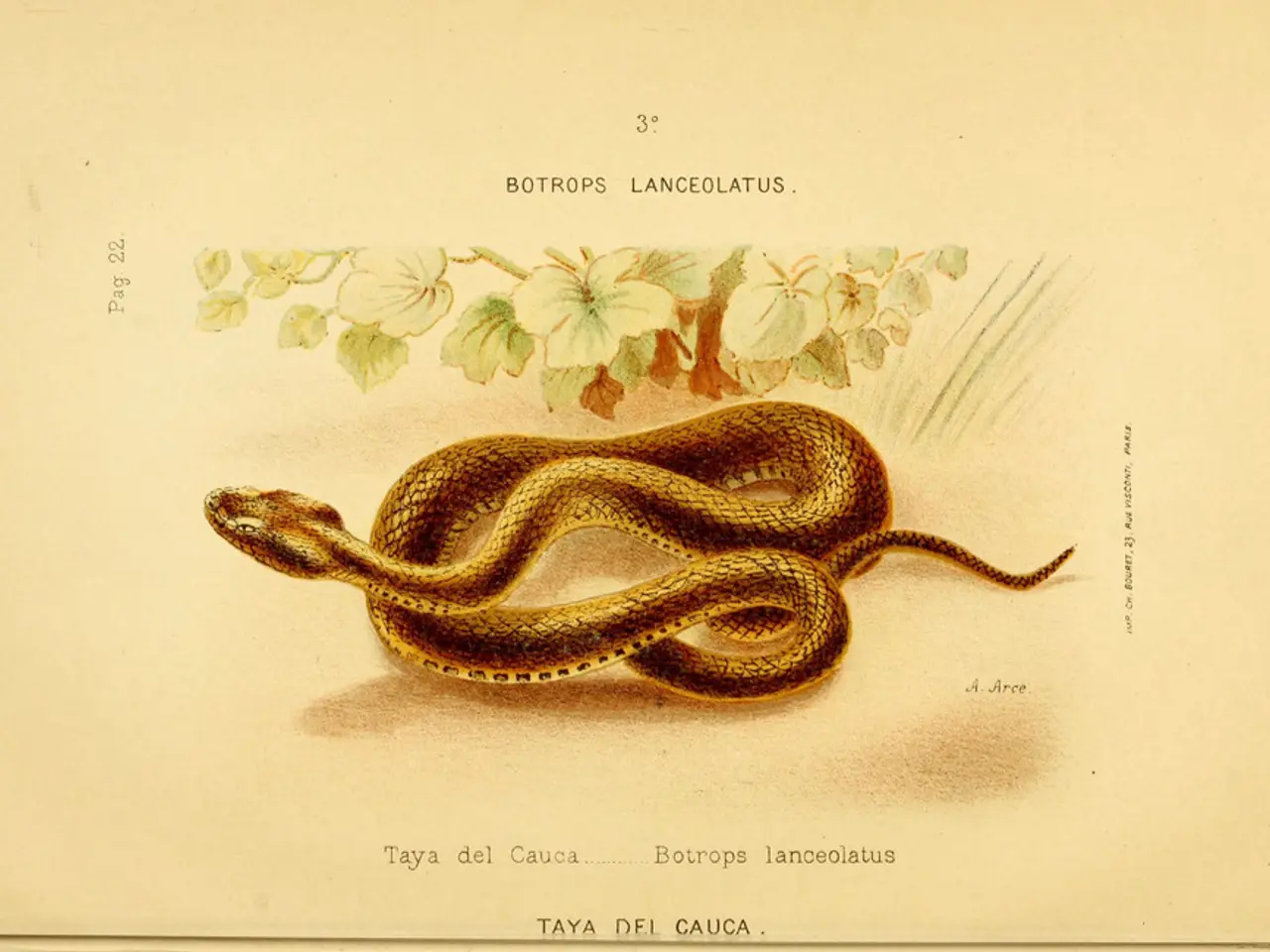Unprecedented Discovery of a Vast 47-Million-Year-Old Serpent Unearthed in India - A Remarkable Giant Among Ancient Reptilian Species
In the heart of India's Kutch region, a team from the Indian Institute of Technology Roorkee has made a remarkable discovery. They've unearthed the fossil remains of a colossal snake species, estimated to have measured approximately 50 feet in length, and named it Vasuki indicus.
This new species is part of the Madtsoiidae family, an extinct group of large, often terrestrial snakes that spanned roughly 100 million years, from the Late Cretaceous through the Late Pleistocene. The Madtsoiidae family had a wide distribution across Africa, India, South America, and Australia.
The name Vasuki indicus honours the cultural and mythological significance of serpents in Indian folklore. Vasuki is a divine serpent in Hindu mythology, known to coil around the neck of Lord Shiva. The discovery adds to the growing body of evidence suggesting that snakes once occupied a broader range of ecosystems than previously understood.
The fossilised vertebrae of Vasuki indicus suggest it had a thick, cylindrical body and a broad vertebral structure, indicating a slow-moving predator that likely relied on ambush tactics. Ecologically, Vasuki indicus likely inhabited warm, marshy environments such as coastal swamps or floodplains, hunting along riverbanks and swampy terrain in a tropical climate.
The discovery supports the idea that globally warmer climates during the Eocene permitted the evolution of giant reptiles and snakes. The findings about Vasuki indicus have been published in the journal Scientific Reports.
The discovery of Vasuki indicus offers critical insights into the evolution of snakes, particularly in terms of their size and behaviour. It also sheds light on the evolutionary history of other species within the Madtsoiidae family. The Kutch region, which continues to be a hotbed for paleontological research, provides a deeper understanding of ancient life and animal evolution.
The warm climate of the Middle Eocene period may have played a significant role in the evolution of giants like Vasuki indicus. The size and preservation of the fossil challenge assumptions about ancient snake species, giving a unique glimpse into how ancient ecosystems were structured. The Vasuki indicus fossil suggests that they were lush with dense vegetation and abundant resources, ideal for large reptiles to thrive.
The discovery not only sheds light on the evolutionary history of snakes but also helps scientists understand how environmental factors influenced the development of large-bodied creatures. The Madtsoiidae family's distribution across continents highlights the potential for intercontinental dispersal of species during ancient periods.
In summary, Vasuki indicus represents a monumental addition to the Madtsoiidae family, demonstrating the existence of colossal terrestrial snakes in prehistoric India and offering fresh insights into snake evolution, paleoecology, and biogeography during the Eocene. The discovery offers a rare opportunity to study the Madtsoiidae family in more detail and could help shed light on the evolutionary history of other species within this family.
- The remarkable discovery of Vasuki indicus, a colossal fossil snake species in India's Kutch region, adds to the understanding of environmental science, particularly in the field of paleontology.
- The Journal of Scientific Reports has published findings about Vasuki indicus, a new species of snake that contributes to the general news across the globe.
- Students and researchers in the field of education and self-development, specifically those focusing on lifestyle, technology, medical-conditions, environmental-science, space-and-astronomy, and sports, will find the discovery of Vasuki indicus highly intriguing, providing exciting opportunities for learning and research.
- The Kutch region's ongoing paleontological research provides significant contributions to the field of science, offering a unique perspective on general news and the evolution of various species, including Vasuki indicus.




